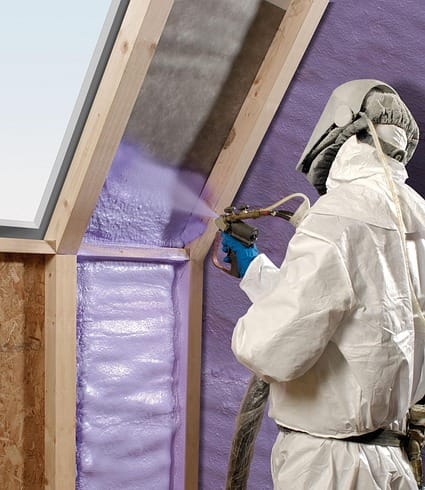
External pipe insulation is vital to maintaining the energy efficiency of your home. Ideally, the pipes should be insulated to prevent the cold from escaping. But how do you fit insulation behind the pipes? There are several methods for this, and you can choose the most suitable one for your home. Mineral wool batts, fiberglass batts, and rigid foam can all be cut to the exact dimensions of the wall cavity and installed in the space behind pipes.
Cotton-wool insulation is the easiest to install. Its consistency in filling density is crucial. The fibers are fixed to the pipe using a tie wire. However, cotton wool is hygroscopic, which means that it can get wet easily. To avoid this problem, you should use a vapor barrier layer over the pipe. To prevent this, you can use polyethylene film.
Find out the Basic Characteristics of External Insulation
You can also cover the insulation with a cover layer that protects the insulation from precipitation. If you’re installing external pipe insulation, you can consider a combination of the two methods. The first type is cotton wool, which is a relatively cheap and durable option.
Its advantages over other types of insulation are that it can be applied in circular patterns, and you can also use a second piece of pipe wrap to cover long pipes. Finally, you can purchase rubber or foam pipe sleeves that are made to project outside and can be purchased in various sizes from 1/2 inch to one inch. Using pipe insulation helps protect against the outside elements. You can use a vapor barrier that prevents the warm air from reaching the pipe.
This prevents your pipes from freezing. You can also use heat tape to wrap the pipe insulation. Once you’ve wrapped the pipe insulation, you can seal it with adhesive to prevent moisture from getting inside. So, don’t wait any longer. Invest in external pipe protection today. The right solution will keep your pipes safe.
Liquid insulation is another type of external pipe insulation. It’s a composite material composed of a two-component polyurethane sealant and a protective sheath made of stainless or galvanized steel. It’s commonly used to protect large-diameter pipes. It is a good choice for external pipe insulation because it’s durable and water-tight. You’ll be able to use it for a long time, depending on your preferences.
To remove all risks from pipes, the elimination of insulation is recommended.
Shells are another form of external pipe insulation. It’s a specialized rubber pipe insulation that can be used for both supply and waste pipes. It’s available in a variety of sizes, from 15mm to 54mm. Unlike polyurethane, it can be easily shaped, making it easy to use. The best part is that it’s very simple to install.
The main advantage of this kind of Rockwool pipe insulation is that it’s cheaper than other forms of external piping protection. Unlike external pipe insulation, this type of insulation is not permanent. It can be installed anywhere.
Both ways work well, but remember that it’s best to hire someone with experience to do the job. There are many benefits to external pipe insulation. It’s a good investment to save money on energy costs and to feel confident that you’re making a good decision. It’s a good idea to insulate pipes that run through an exterior wall cavity.
Adding pipe insulation can be part of an energy-reducing plan.
You can use a variety of insulation materials, including mineral wool batts, fiberglass, and rigid foam. The material should be cut to the proper dimensions and sealed with duct tape or adhesive. This way, your external pipes will stay cool no matter what the weather does. This is an excellent way to extend the life of your insulation. It’s also an excellent choice for plumbing in an older home.
Waterproof pipe insulation can be a good choice for a home where water pipes run through exterior wall cavities. For a larger house, polyurethane-based foam is a great option because it is lightweight and easy to fit around the pipe.
It’s especially useful for smaller pipes that are only 100 mm or so in diameter. The material is often fitted with electrical tape or fixed to the wall cavity. This way, external pipe insulation provides a comfortable barrier that will prevent cold from reaching the pipes.
How to Insulate Ductwork With the Help of Rockwool Products?
There are several reasons to use ductwork insulation. Not only does it make your ductwork more energy efficient, but it also reduces the chance of condensation and mold. If you live in a cold climate, you may want to consider adding more insulation to your duct system. This will prevent the air from escaping and keep your home comfortable.
Here are some steps to follow to achieve the desired results:.
- Before insulating your piping, you should make sure that you have adequate knowledge of the physics of ductwork.
- Before insulating your ductwork, you should consider sealing your ductwork. This will ensure that the insulation will be more effective and last longer.
- Most ductwork leaks occur at joints and vents, so sealing these areas is vital.
- The best place to seal these areas is in unconditioned spaces such as attics or basements.
- The surface of the hoses should be clean and dry to avoid moisture buildup. It is important to seal the ductwork before you install the insulation. If your ducts are not sealed properly, the insulation will not be as effective. The first step to sealing is to clean the ductwork to remove any dust or moisture.
How to Get Professionally Installed Pipe Insulation at Home
While you’re cleaning the hood, inspect the ductwork and mark any holes or spots where the leak may be. If you’re working with fiberglass, remember to wear protective clothing, a dust mask, and goggles. Using gloves is optional. To apply the insulation to your ductwork, you should remove the old duct insulation.
Cut the new duct insulation to fit snugly around the trough, but not so tight that it compresses the fiberglass. Once the duct insulation is in place, it’s a good idea to use tape to hold it in place. This will prevent any unwanted condensation from forming. You should also consider sealing the seams with a piece of tape.
The next step is to insulate the ductwork. This is done by insulating the pipe. Insulate the ducts as much as possible, but be careful not to over-insulate. You’ll be surprised at how much energy you can save by implementing proper ductwork insulation. The heat loss from a house’s insulated ductwork can be up to 30%, so ensuring that it stays at the desired temperature is crucial.
Summary
If you’re doing a DIY project, ductwork insulation is a great option. Depending on how much insulation you need, it can cost between $0.95 and $2 per square foot. You should be aware that the longer the ductwork is, the more expensive it will be. So, it’s important to do this correctly. You can’t afford to ignore a single piece of duct insulation! The next step is to make sure that you install the right type of insulating material for your home.





